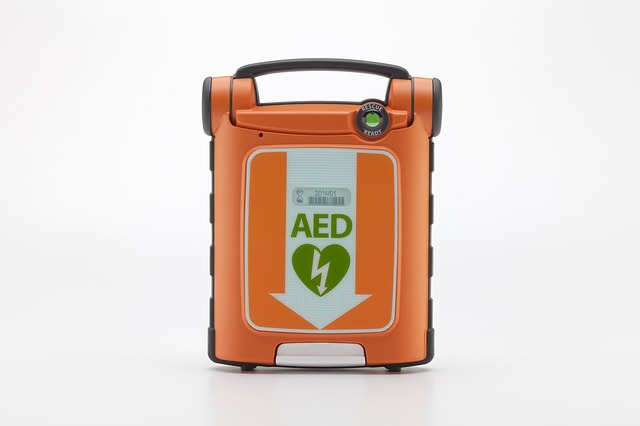What is the Best AED for the Workplace – An In depth Guide for use in your Workplace! – When both AED and CPR are combined, they offer an improved chance of saving lives in the event of a heart attack. It is necessary equipment every workplace should have.
Table of Contents
Introduction to Automated External Defibrillation:
SCA (sudden cardiac arrest) is the primary issue for sudden deaths in many people across the globe. Sudden cardiac arrest occurs when one’s heart stops beating unexpectedly.
Even though 90% of the victims who get cardiac arrest are over the age of 35, there is a chance of it happening anytime and anywhere. For example, it usually occurs in the workplace, community, or homes that are far away from EMS support.
Cardiac arrest occurs when the heart stops pumping blood to the brain. When the brain does not get enough nutrients and oxygen, brain cells start to die within a few minutes, followed by death
CPR helps in maintaining the blood circulation and oxygenation. Survival is impossible in the event of no circulation.
Sudden Cardiac arrest is currently one of the leading medical emergencies.
The heart goes into a shocking Rhythm called VF (Ventricular Fibrillation) in which the heart muscles flutter for a few minutes before the heart completely stops beating.
What is the Best AED for the Workplace
Automated External Defibrillators (AED) include pads that you apply to the victim’s chest (surrounding the heart); it examines the electrical activity of the heart and confirms whether the heart requires a shock. This is dummy proof as the machine will dictate when and if the heart need s a shock. Many of these machine will have a step by step voice that will tell you what to do!!!
The AED can save lives if it is performed within 5 minutes of heart arrest. The pads are connected with the help of wires and connected to the AED which is applied to the victim’s chest, it checks for the heart rhythm by detecting the heart’s electrical activity.
If the heart is in VF, the AED advises the first aider to press a button which provides a shock to the heart. The shock helps to retain the normal rhythm of the heart and save a life.
AED’s are designed developed in ways that are easy to use and made so any one can use it. The devices verbally walk rescuers through all the necessary steps during a first aid situation.
Everyone has the ability to safely and correctly use this device regardless if they have a medical background or not. AED’s can be found in a lot of facilities and security guards, first aid attendants, coaches, teachers, family members, friends, recreational facility staffs, caregivers, police, firefighters, healthcare providers, paramedics, etc can all provide AED services during a cardiopulmonary resuscitation situation.

Why should a Workplace need an Automated External Defibrillation?
Whether your organization consists of an entire building, a small office or a floor of a building, or a multi-site workplace, or any other related workplace, it is must to have an AED located on site and a program implemented that trains staff.
The chance of survival is more significant in the case of AED provided immediately to the victim (up to 85%).
The AED program can be efficient as well as cost-effective employee insurance and a health investment program available for your enterprise.
You will have a better idea whether your workplace needs an Automated External Defibrillation by answering the following question to yourself.
Are there office areas in remote locations.
High-risk office towers, long distance between the workplace and EMS station, restricted areas which do not allow access to any vehicles, multiple buildings, heavy traffic, large venue, etc. which leads to delayed response time!
Is there a high chance for people having a heart attack, stroke or other cardio diseases?
Getting Started – Automated External Defibrillation:
The first step is to create an AED task group or committee for your enterprise. The task group can hold any number of members, but it should be important that the committee includes motivated individuals who are ready to work together to take care of the AED program efficiently. It is also essential for the group to contain representatives from different levels.
Before taking any important decisions regarding the AED program, the community should check for the following aspects:
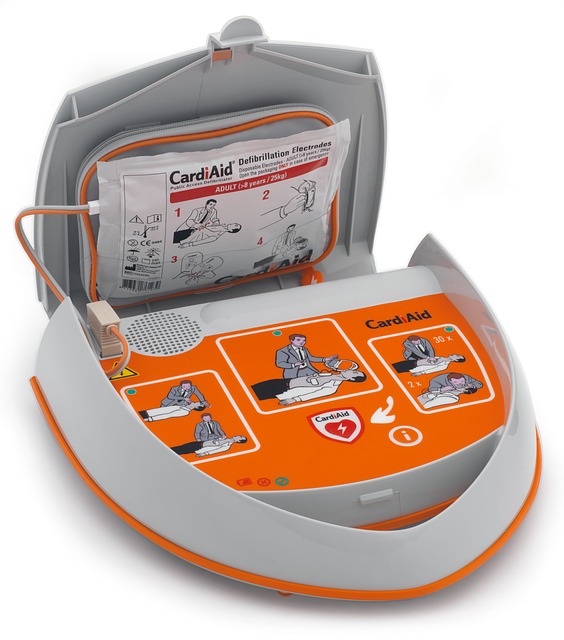
1. The expectations of how AED program works within your enterprise.
2. Will they get any internal support from the organization key groups or administration for the AED programs?
3. How to evaluate the success of the AED program?
4. What are the Organization’s health priorities?
5. What are the things that will be a barrier in your organization to implement this AED program?
6. What process of decision making will be followed and how it is decided regarding the Purchasing?
Once your community has addressed all the above problems, the AED committee should incorporate a plan to start the AED program. There are many factors to consider while planning an AED program.
Planning an AED Program:
Decisions should be made regarding how many AED’s are required and what brand should be purchased, where they can be placed, how to locate, access and maintain them for a workplace.

What kind of training is needed?
How many AED’s?
What type of AED’s need to be purchased?
Which location chosen for placing the AED?
The choosing process for the perfect AED model for your enterprise depends on multiple factors like storage, training, budget and more. There are plenty of models of AED present in the market within the price range of $1500.
The Amount of AED’s to be purchased, where they should be placed and other related things are based on the numerous factors like how efficient it’s for EMS to reach any parts of your community venues or worksites, the population in your organization (number of clients, workers, and level of risk), barriers in AED implementation namely location and size of the site.
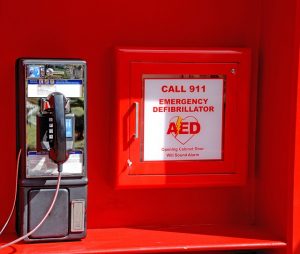
AED Placement –Where and How Many?
There are a few things to consider when determining how many AED units are right for you and where you should place them. Use this as a guide to point you in the right direction.
The primary objective for any successful PAD (Public Access Defibrillation) program is to achieve a 3-minute response time from collapse of a victim to arrival of the AED unit.
When making any decisions about placement use this 3-minute response time as a guide to determine where and how many units to place.
Response Time
The less time that passes between the victim dropping to the ground and the shock being delivered, the more likely the victim will survive.
The goal is to get the AED to the victim’s side in less than 3 minutes. This means that the AED should be stored within 1½ minutes of the victim, in case you need to go from the victim to the AED location and back.
Since you don’t know exactly where the victim will be, place the AED in an area that is available to the most people.
Rate of Incidence
Another important factor when determining placement is to identify locations at which the rate of cardiac emergencies is high or higher than normal. A company will want to determine if there are locations at the site where the incident may be higher, and there are two main considerations to keep in mind.
Volume of Employees and Visitors:
Important areas that warrant an AED placed in close proximity include those with a high population density. Examples of this would include areas such as cafeterias or a call center with many cubicles.
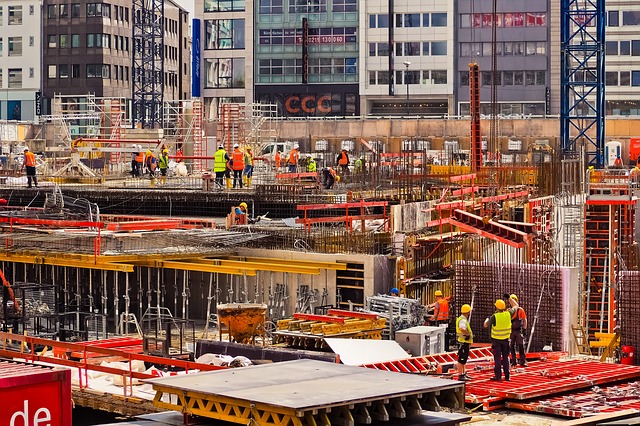
High-Risk Activity:
The other important area that warrants placement of an AED in close proximity include those with high-risk activity.
A prime example is any area where there is physical activity that will raise the heart rate, such as corporate fitness centers, swimming pools or other recreational areas.
Company areas with a higher level of physical labor, such as a warehouse, construction area, loading docks or an assembly line are also at a higher risk for a cardiac emergency.
Determining Location
Identify the best locations with the fastest access to most people use these three simple tools: a floor plan, a stop watch, and a clipboard. Using the floor plan, identify accessible areas where the AED can be mounted on a wall, in high traffic areas, visible to a lot of people.
When figuring the time it takes to get the AED to a potential victim, consider delays like elevators and stairs, restricted access, and crowded production or stock areas.
Take your stop watch to the proposed AED location and start timing. Note: Time this exercise while walking at a quick pace but not a run. Walk north for 1½ minutes, and mark the area you’re standing in on the floor plan. Return to your proposed AED location and repeat the exercise south, east and west.
You should end up with four marked areas around your proposed AED location. Draw a circle through the marked areas which indicate a radius of 1½ minutes from your proposed AED location. You can see what areas are covered and what areas are left out.
When the highly populated coverage areas have circles that are touching, you’ve done a good job protecting as many employees as possible. If the budget won’t allow enough AEDs to cover all the areas, then protect as many employees as possible.
Remember, once the AED reaches the victim’s side, it should take less than 90 seconds to prepare the AED and deliver a shock, if indicated. The ‘drop-to-shock’ time is critical to successful defibrillation.
Physical Placement
Once you determine how many AED units are needed, it is important to carefully consider the actual location. The location must be accessible to trained rescuers if needed. The AED itself needs to be secure and accessible.
The location should have a nearby phone with easy access to an outside line so that the 911 can be dialed. It should also be a location that either all staff knows about or can be advised of. Some examples may be the main receptionist area, cafeteria, main hallway, first aid station, fitness room or security post.

Potential Problems
Vertical Response Time, Remember that response time is determined based on how long it takes to actually reach a potential emergency scene.
This means that office complexes, high-rise buildings and multi-floor locations present obstacles that will affect the response time.
Except in the case of a small building, it is usually recommended that a minimum of one AED unit be placed on each floor. It is also recommended that you calculate the response time using a route that includes stairs as opposed to an elevator.
Hard to Access Areas
Any area that is difficult to access should have its own AED unit. For security or work-flow purposes many companies will often have work areas that are sectioned off from the rest of the building. Primary examples include locked areas that require a key, an access card or and access code to enter.
Any area that is highly sensitive and off-limits to the majority of staff should have its own defibrillation unit, whether it is a research facility, executive level or a warehouse with inventory that is being safeguarded.
Other Considerations
Not all gatherings of employees take place at the actual business location. Consider all scenarios that require employee attendance, including conferences and off-site business meetings. A scenario where attendance is optional but likely is also very important, such as company special events like social gatherings, holiday parties and company barbecues.
Survival rates decrease 7 –10 percent every minute that defibrillation is delayed. By having AED units available at your location you will significantly improve the survival odds of your employees in the event of any cardiac emergency.
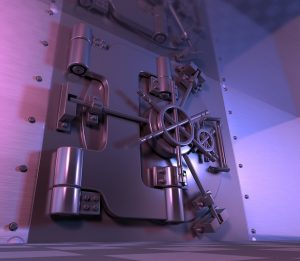
Is the location you chose for placing AED is secure?
Rescuers need easy and quick access to the machine during emergencies. Security will not be a significant problem in some locations, but it is required.
The security you implement should not prevent non-staff members and any other rescuers in accessing it.
The AED availability needs to be marked clearly, and the plans need to be placed nearby the place so that accessing the equipment will be made easier.
How to maintain the Units?
The community should make decisions on who will take care of maintaining these AEDs, how often they will need maintenance.
AEDs needs to be routinely checked to make sure that they are working correctly so that it would be secure in the case of an emergency to save many lives.
All units should be maintained as per manufactures specs. All users should read the users manual.
The Rescuers.
There is some critical decision which should be made namely how to set up the AED program, who will be trained to make use of the AED programs.
AED itself will not be able to save lives, and a rescuer is needed to save human lives with the help of AED’s.
The rescuers should know how to use the AED effectively. AED’s can be used by anyone with no or little medical background apart from the medical personnel.
Who can take up AED training and how many can be trained to utilize the AED’s effectively?
To check out who will get benefit with the AED training, consider the person who tends to be nearby the AED anytime and available to perform AED In an emergency.
If you are not able to train everyone, you should decide who should be trained from organization and what type of training should be provided.
A simple call to a local training facility will inform you of this. Every state/province is different so training requirements vary.

Funding:
Workplace and Community AED programs are responsible for saving victim’s life. Before implementation of AED programs, the important thing one should discuss is the funding issues. How much funding will your organization program needs?
Make sure to list every cost in the budget namely:
· A number of locations you are going to serve.
· Annual insurance and maintenance cost.
· Quality Assurances.
· Initial cost for purchasing new AED equipment.
· Other equipment like batteries, replacement adhesive pads.
· Price of event documentation.
· Any other workplace/community initiatives namely:
· First aid training, CPR/AED training, heart health programs, etc.
What are the funding sources available for the organization?
Some workplace/community AED programs will get the funding from sources like local emergency services. Local healthcare and municipal government agencies are also essential funding sources available.
Apart from that, there are some extra funding sources like: Local industries and corporations. Private foundations Local fund-raising events Grants and government funding. Local civic organizations like the Legion, etc Public Charities.
AED Decision Factors:
Now you are ready to implement your AED program to your office but make sure the AED you purchase are good quality!
There are AED machines available with different type of devices from various manufacturers.
Here are a few considerations one should look into before making a purchase.
Manufacturers:
Make sure the manufacturer you are getting from has a good reputation, and has good customer reviews. The best AED manufacturers will have outstanding customer services.
Price:
Price is one of the essential factors every business should make while purchasing an AED. Some machines retail at $1,000. The organization can choose the preferred one as per the quality factors they prefer.

Semi or fully Automatic?
A fully automatic device is best for the persons who have no or little no knowledge.
The machine is developed to work automatically, when the device is turned on the pads applied along with AED examines the heart rhythm, if it detects any shock rhythm, it announces “Stand dear delivering a shock- before applying a shock to the victim’s heart.
When considering the semi-automatic device, it advises the users to provide the shock to the victim’s hear if needed by pressing a button or using a voice command.
Delivering Energy:
AED provides about 150J which is a fixed current for any shock or an accelerating current from 200j and than followed by 300 J, 360J, etc. It varies based on the victim.
The APE IP rating mean the tolerance of machine to moisture and dust.
A device which has the IP rating of 21 is best suited for traditional office environment whereas IP rating of 55 means suitable for dirty and resilient environments.
ECG:
ECG monitoring helps the AED to gather information regarding the victim’s heart shock rhythm. It Is an extra feature that does not benefit the casualty immediately, but it helps in providing better care when the victim is saved.
• Data Download in ECG: Data collected is easily downloaded through different ways through USB Cable, Data Card, WI-Fi, Infrared connection and more.
• ECG Memory: Gathering data is the AED requirements and can be utilized to analyze the casualty treatment received.
CPR Coaching:
Few devices include CPR coaching Facility. It is a primary timekeeper to assist in the regulation of your compression speed, or it provides a verbal response on the compression’s quality including location, rate, and depth.
Electrode Shelf life:
The pads or electrodes include a shelf life. Few pads include a compression analysis pad located on the sternum that provides the chest compression quality guidance.

Battery Life:
Some batteries costs range up to $400.00. Some may be cheaper but will not have the capability to last longer. It is essential to go with good features even if the device rate is high. Never compromise on a device that you get for your health.
What is the Best AED for the Workplace:
AEDs save lives. Make sure you get the perfect one by looking over all the recommendations stated in this detailed guide.
Hope this blog informs you about the many details that purchasing an AED.
Any queries or comments on the AED are welcome!!
How many of you are using AED in your workplace?
What do you think about having or using an AED?
Let us know through the comment section below!!

